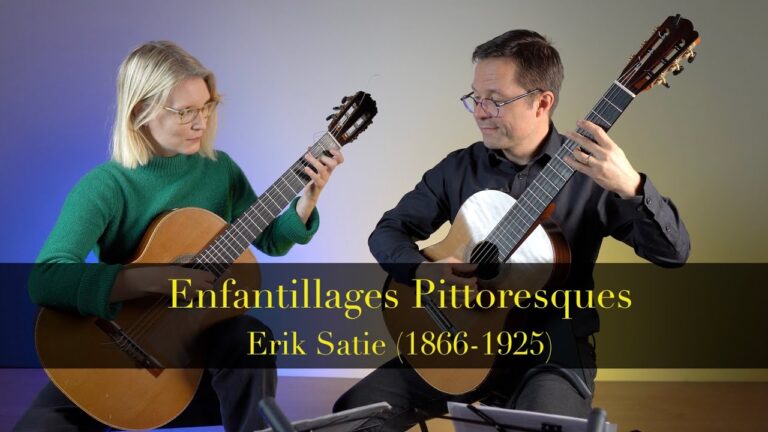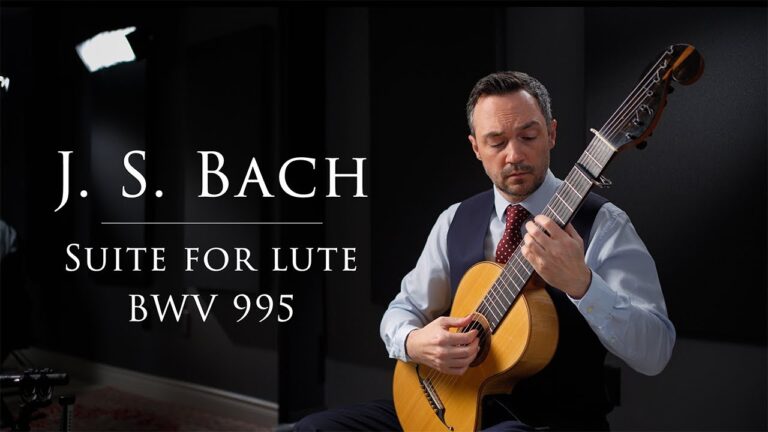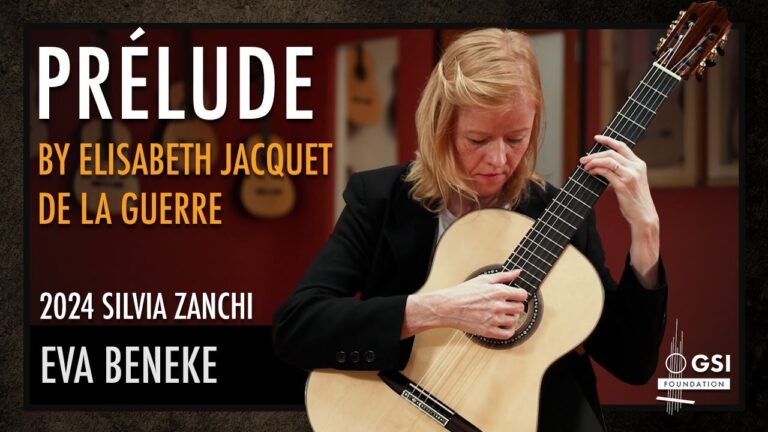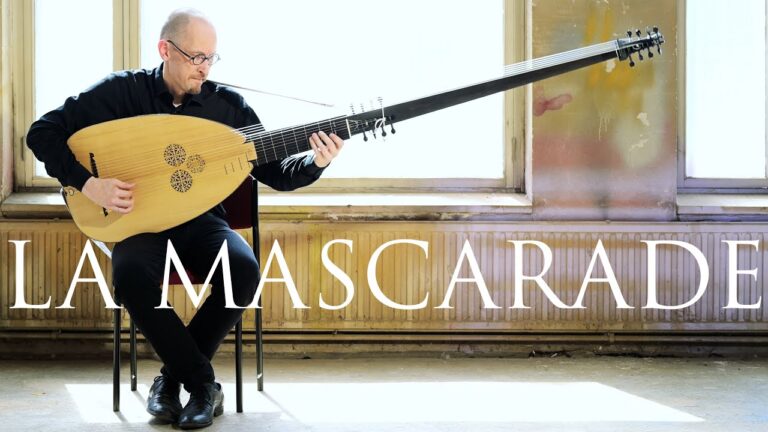Sinfonia (Arioso) from Cantata “Ich steh mit einem Fuß im Grabe” BWV 156 by Johann Sebastian Bach (1685-1750). PDF sheet music or tab arranged for classical guitar. Comes with both a notation-only edition and a tab edition. Left hand fingering. Early-Intermediate level (grade 5). Free video lesson and performance.
Sheet Music or Tab Edition (PDF)
- Sinfonia (Arioso), BWV 156 by Bach from Werner Guitar Editions
This arrangement is of the first movement, often nicknamed Arioso, from Cantata BWV 156. In case you’ve heard another version, the sinfonia was later adapted as the middle movement (Largo) in Bach’s Harpsichord Concerto in F minor, BWV 1056. I first added the melody (originally an oboe soloist) and then the basso continuo line and have kept them intact except for some changes in the octave to fit on the guitar. I then added the violin accompaniment whenever the melody was sustaining the tied quarter notes. Due to the cramped limitation of one stave, I’ve combined the continuo line with the accompaniment into one written voice to create a clean score. Sustain the bass and accompaniment notes as needed. The sinfonia was later adapted as the middle movement, Largo, in Bach’s Harpsichord Concerto in F minor, BWV 1056. Video Performance Lesson Link
Original Cantata
Cantata ‘Ich steh mit einem Fuss im Grabe’, BWV 156 performed by the Netherlands Bach Society for All of Bach, opens with a Sinfonia that is dominated by a melancholy oboe solo. The first aria has an unusual construction. While the tenor already appears to be reconciled with his imminent death, the soprano cuts through his sorrowful notes with Johann Hermann Schein’s hymn ‘Machs mit mir, Gott, nach deiner Güt’. Lars Ulrik Mortensen, conductor and harpsichord.
More Bach Editions and Videos
- J.S. Bach (1685-1750) – Baroque, Germany
- Suite in E Minor BWV 996 by Bach (Complete), Advanced, Free Unfingered, Sheet Music or Tab
- Bouree from BWV 996 by Bach, Grade 6, Free Sheet Music or Tab
- Air ‘On the G String’ BWV 1068 by Bach, Grade 4, Sheet Music or Tab
- Jesu, Joy of Man’s Desiring BWV 147 by Bach, Grade 4, Sheet Music or Tab
- Minuet in G, Anh.114 by Bach/Petzold, Grade 4, Notation or Tab
- Prelude in D minor, BWV 999 by Bach, Grade 7, Sheet Music or Tab
- Prelude, Cello Suite BWV 1007 by Bach, Grade 7, Free Unfingered, Sheet Music or Tab
- Cello Suite No. 1 BWV 1007 by Bach, Free non-editorial edition
- Prelude in E Major, Lute Suite BWV1006a – Advanced, Free Unfingered, Sheet Music or Tab
- Sinfonia (Arioso) from Cantata BWV 156 by Bach, Grade 5, Sheet Music or Tab





One of my favorite pieces. What I great arrangement. Thank you for your work
Beautiful piece. I noticed in bar 13 a series of sixteenth notes with the first two written as triplets. You played the rest as triplets but this is not indicated. Is this correct?
Yes, continue with triplets when they are beamed in groups of three. In many editions it is a way to clean up the score and not write out the brackets over and over. I only omit them if it’s a consistent pattern and the groups of three are obvious after the first few. Different editors will choose differently.
I really like how you have arraigned this piece and your lesson is great. I wonder if this arrangement might have even more depth if the 6th string was tuned to D? Was curious if you had considered that and your thoughts about that?
Yes, I explored that option but I ran into fingering problems and it works so well with just the E string. An extended range would be nice though.
Thank you for sharing your devotion to music in general and the guitar in particular. You are an excellent teacher.
Phen
Hi Werner
Greetings from rainy Australia, thanks so much for this beautiful gift to carry us gracefully into the new year
James
Thank you Bradford for sharing the excellent music you select for us, for all the wonderful and dedicated teaching you do. I can’t believe how much I have grown on my guitar .and the joy of learning you have inspired. Blessings and Happy holidays to you and yours.
Virginia
Glad it was helpful!
Thank you for this holiday gift! I’m so grateful for your work, and for your role in my progress with the instrument. You keep my motivation up and have helped me gain so much appreciation for the wide variety of classical guitar music out there. Thanks again and Happy Holidays.
-Leslie
A lovely Christmas present. Thank you. I’m sure the Beatles were listening to this when they wrote Hey Jude.
Ya, I know, hard not to hear it in there.
Thank you, Bradford, so much for all the work you do teaching us classical guitar and posting wonderful videos. I appreciate the music you choose, your clarity in the way you present it and your generosity.
May you and yours have a joyous Christmas and a wonderful New Year.
Karen Allison
Tucson, Az USA
Thanks so much!